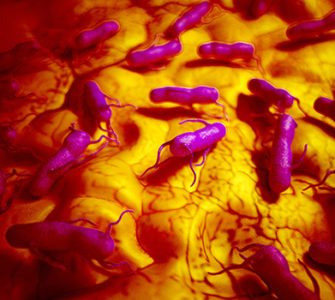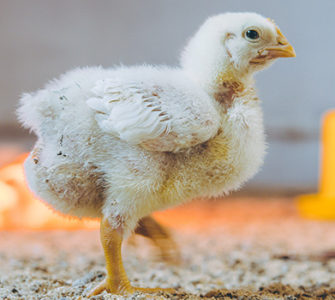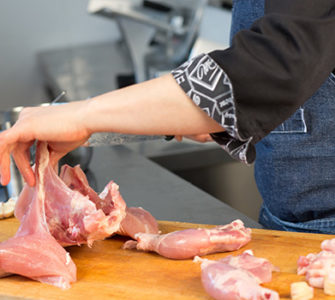Moving up: Vaccinating broilers may help poultry companies improve Salmonella ratings
Vaccinating broilers against Salmonella could be an effective live-side intervention for obtaining higher ratings in the Salmonella categorizations established by the USDA’s Food Safety and Inspection Service, according to Kalen Cookson, DVM.
“We believe vaccination can really make a difference” for producers trying to get their Salmonella loads down coming into the plant, Cookson told Poultry Health Today.
Several studies, including field trials, indicate vaccination of broilers can reduce the incidence of Salmonella between 30% and 60%. That’s based on tests comparing rehang rinsate samples from vaccinated and unvaccinated broilers, he said.
The reduction included Salmonella types in Group B, such as S. Heidelberg and S. Typhimurium; Group C, which includes S. Hadar and S. Kentucky; and S. Enteritidis, which belongs to Group D, Cookson said. There tended to be greater reductions with the Bs and with S. Enteritidis, but there were also reductions in Group Cs.
Factoring in cost
Hesitation to vaccinate broilers is generally due to cost, Cookson explained. Two doses are recommended — one by hatchery spray followed with a field boost.
While vaccination can help producers meet the new, tougher USDA standards, studies have shown that birds vaccinated for Salmonella can have better average daily gain, resulting in improvements in adjusted feed conversion by as much as 2 points (0.02). Therefore, some of the cost of vaccinating would be recovered if improved performance is seen, said Cookson, director of clinical research, poultry, Zoetis.
Producers have to factor in where they’ll get the greatest return on their investment — at the processing plant or on the live side. But when people are in Categories 2 and 3, cost becomes less of a factor “because…there’s a lot more at stake,” he said.
Other live-side interventions that can reduce the prevalence of the pathogen at processing include good hatchery sanitation and avoiding wet litter in broiler houses, which can lead to higher levels of bacteria, including Salmonella, he added.
USDA/FSIS category definitions
Category 1: Establishments that have achieved 50% or less of the Salmonella or Campylobacter maximum allowable percent positive during all completed 52-week moving windows over the last 3 months.
Category 2: Establishments that meet the Salmonella or Campylobacter maximum allowable percent positive for all completed 52-week moving windows but have results greater than 50% of the maximum allowable percent positive during any completed 52-week moving window over the last 3 months.
Category 3: Establishments that have exceeded the Salmonellaor Campylobacter maximum allowable percent positive during any completed 52-week moving window over the last 3 months.
Editor’s note: This video interview, podcast and news article were developed independently by the editors of Poultry Health Today. They are presented here solely for their news value. The opinions and recommendations presented are not necessarily shared by the editors of Poultry Health Today or the interviewee’s employer.
Posted on May 13, 2019

















